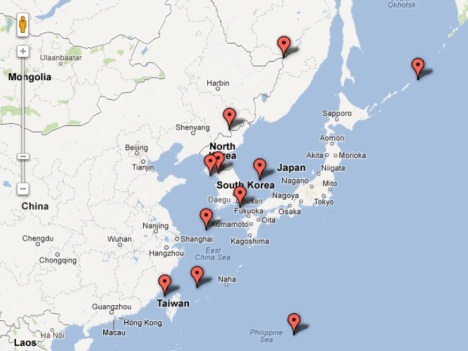Disputed Waters, Contested Lands
29 Jun 2012
Traditional balance of power dynamics continue to define the security and foreign policies of Northeast Asia. As demonstrated over the course of this week, continued stalemate on the Korean peninsula, the political and economic rise of China, and the United States’ shift in strategic focus to the Asia-Pacific makes the prospect of a meaningful regional security apparatus less likely than it seemed a decade ago. From the status of the Diaoyu/Senkaku Islands and the Okinotorishima Atoll to Taiwan and the Korean Peninsula, the persistence and intensification of territorial and maritime disputes in this part of the world confirms a familiar narrative of nationalism, great power rivalry and conflict. In today’s map, we profile some of Northeast Asia’s most intractable disputes.
Territorial and Maritime Disputes in Northeast Asia
Maritime and territorial disputes, however, are not just about nationalism. At a recent conference hosted by the East Asia Institute in Seoul, Thomas Berger, a professor of International Relations at Boston University, argued that while nationalism tends to complicate efforts to deal with disputes, the ultimate drivers are geo-economic and geo-strategic. Though nationalism increases the likelihood of local commanders acting on their own initiative in volatile situations and raises the domestic costs of compromise, the most important factor in the persistence and intensification of maritime disputes in this region are China’s naval growth and its growing economic clout.
[Resource Embedded:144646]

.jpg)
